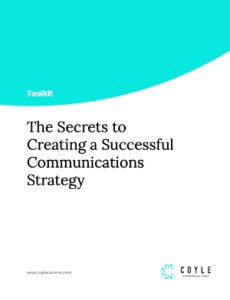Is your brand recognized as a thought leader in its industry?
In today’s social age, potential clients are making business choices based on the quality and visibility of your brand’s thought leadership before they engage with you. Thought leadership is no longer a ‘nice to have’ but a necessity.
By sharing insights and ideas – online and offline – that are relevant to your current and potential markets, thought leadership can differentiate your brand from the competition.
Here are six steps towards building a successful thought leadership strategy:
Revisit your brand strategy. You will need to know the core offerings of your brand and how that will evolve in the future. Review your strategy with leadership and have a conversation about the future.
Identify the experts. Review the expertise and background of your c-level executives. Align their expertise with your core offerings now and in the future to begin to determine how their knowledge can be maximized to make your brand more credible and marketable. Keep in mind your most valuable thought leader might be the most unassuming person in the room who never ‘toots their own horn’.
Examine the playing field. Research the channels and opportunities available within your brand’s current and future target markets. Understand themes and content trends over time. Which are more successful than others? Which brands are well positioned and why?
Determine your timeline. How long will it realistically take for you to implement your thought leadership strategy? Your experts may need training first so you will need to allow additional time and you may need to socialize the importance of thought leadership throughout your company.
Develop your thought leadership strategy. Create strategic goals, a content plan and pipeline that align each expert with a particular market segment. Identify what mix of channels will not only be most effective but where the experts will be most comfortable. Ideally, it is a mix of both online (platforms and channels) and offline (speaking events and webinars). Determine how you will measure results and how often.
Take content risks. Clients and potential clients will want to know how your brand envisions the future. Your experts should be comfortable stepping outside their comfort zone to discuss what will be happening in the future within their market areas – whether right or wrong.
Remember to include your experts and leadership in the development of the strategy and to keep your content within your brand’s service areas now and in the future. This will enable you to establish your company’s commitment to thought leadership and to maintain content alignment with your brand strategy in the long-term.



